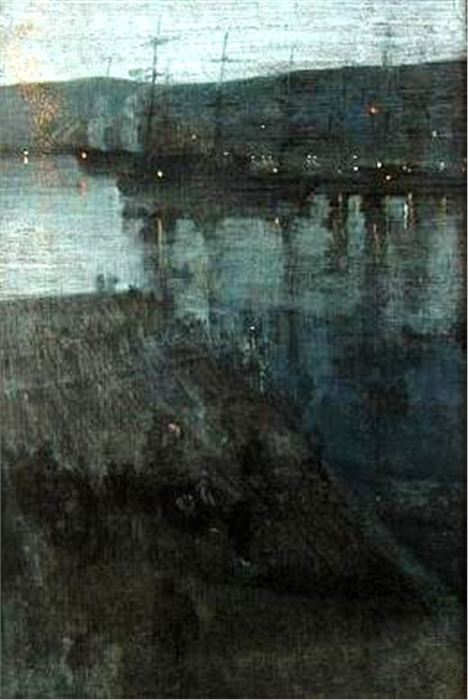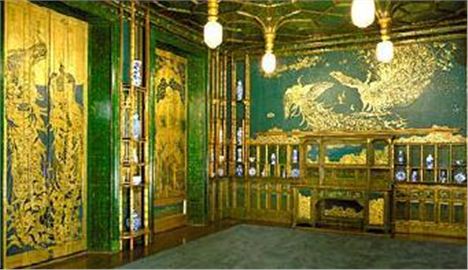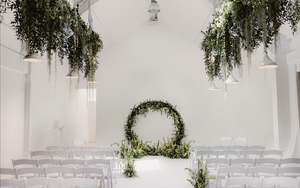JAMES McNeil Whistler was a charismatic individual, a man who got on everyone’s nerve except his own.
So many of his works currently on show at the Bluecoat are Quixotic reflections of an artist regarded by many as one of the most self-centred, pretentious protagonists of his age.
This retrospective gathers together many of Whistler’s works - paintings, watercolours, etchings and standalone furniture - many of them assembled for the first time in the UK. It’s the Bluecoat's contribution to the Liverpool Biennial, A Needle Walks into a Haystack, and is curated by Mai Abu ElDahab and Rosie Cooper.
He was, without doubt, a flamboyant self-promoter who knew that 'being talked about' usually worked in his favour and took on the existing art establishment with almost missionary zeal
This show stands in stark contrast to partner exhibitions at the Blind School [former Trade Union Centre], FACT and Tate. Where there is, perhaps, a perceptible shock of the new in other venues.
The art establishment elite hated Whistler, not so much for his output but because he asked a very basic question…”What is Art?”. Note that capital A.
For much of his time between the studio, salon, lecture halls and social gatherings, he became the dandy bête-noire who challenged the notion that Art must be morally uplifting and “have a purpose” which generated nothing but mocking and derision in the popular press, most notably Punch.
Most people know about Whistler through the side-on portrait of his mother, an icon within the chronicles of American art of his birth. He was actually technically proficient, as evident in both Arrangements in Grey and Black – Thomas Carlyle and Symphony in White No. 1 [The White Girl]. He came up with musical subtitles to underpin his work – symphonies, nocturnes and so on; mainly to add a sense of notational gravitas.
He went on to say that “by using the word ‘nocturne’, I wished to indicate an artistic interest alone, divesting the picture of any outside anecdotal interest which might have been otherwise attached to it. A nocturne is an arrangement of line, form and colour first.”
These are best illustrated with two works; Nocturne in Black and Gold [falling rocket] and Nocturne in Blue and Gold [Valpasiro Bay]. To say that at the time they caused a stir would be a massive understatement and prompted John Ruskin [an influential art critic] to pronounce that “I have seen, and heard, much of cockney impudence before now; but never expected to hear a coxcomb ask two hundred guineas for flinging a pot of paint in the public's face.”
 Nocturne In Blue And Gold _ Valpasiro Bay
Nocturne In Blue And Gold _ Valpasiro Bay
In response, Whistler began legal proceedings, on the grounds of slur and libel, which gave him yet another platform to sermonise against the stuffy prejudices of the prevailing art elites. During the trial, Ruskin asked: “The labour of two days' work of which you ask two hundred guineas?” to which Whistler replied “No, I ask it for the work of a lifetime”. The outcome was that Whistler retained his artistic credentials but was awarded costs of a farthing – a fact which had serious financial repercussions later in life.
This predilection with artistic endeavour within the interminable arguments about “Art for art’s sake” gave Whistler a good deal of grief and, to be honest, much of it self-imposed. He posed paradoxical questions about the role of money, or rather filthy lucre, and what, if anything, an artist should do in order to defend, let alone, justify his calling.
These became the inspirational source of his series of “Ten O’Clock Lectures” which must take the prize for obfuscation, self-flattery, condescending snobbery and dilettante oratory. I’d be surprised if any of the attendees came away with sense of enlightenment, let alone, any real understanding of what Whistler was going on about. Furthermore, Whistler even managed to ostracise his group of contemporaries, including Oscar Wilde, which resulted in the publication of his book “On The Gentle Art of Making Enemies”.
Whistler had his patrons [most notably Frederick Richards Leyland, a ship-owner who lived for a time at Speke Hall], yet managed to have a huge row about work he’d done; in particular The Peacock Room which is an imposing edifice in shimmering blue and gold relief. The exhibition has a life-size copy of it which shows two fighting peacocks - reputed to be both Whistler and Leyland themselves, which embodies their mutual animosity verging on downright loathing.
 The Peacock Room _ Southeast Corner
The Peacock Room _ Southeast Corner
Whistler eventually received his remuneration [less than half the expected cost] and, from around this time, his failing health and fortunes resulted in near bankruptcy and his decision to travel to Venice following a commission from the Royal Society. This is where he produced around 60 etchings, nocturnes and pastels which gave him a foot in the door of the Establishment. The Two Doorways is an example of this though Whistler’s first set of published etchings was known as The French Set or Twelve Etchings from Nature which can be seen in Fumette and The Kitchen.
In the later years of his life, Whistler had successful retrospectives which re-established his popularity with the British public. Subsequently, he was elected president of the International Society of Sculptors, Painters, and Gravers and continued to paint portraits, prints and small oil landscapes and seascapes, including a growing interest in Japanese-inspired composition – notably Variations in flesh colour and green - the balcony.
What, then, to make of Whistler? He was, without doubt, a flamboyant self-promoter who knew that “being talked about” usually worked in his favour and took on the existing art establishment with almost missionary zeal. His life was his Art, again with the capital A.
His blend of Barnum-inspired mockery of the art-elites was intended to provoke a reaction and, though largely hostile, did at least try to respond to the age-old question…”What is art actually for?”














